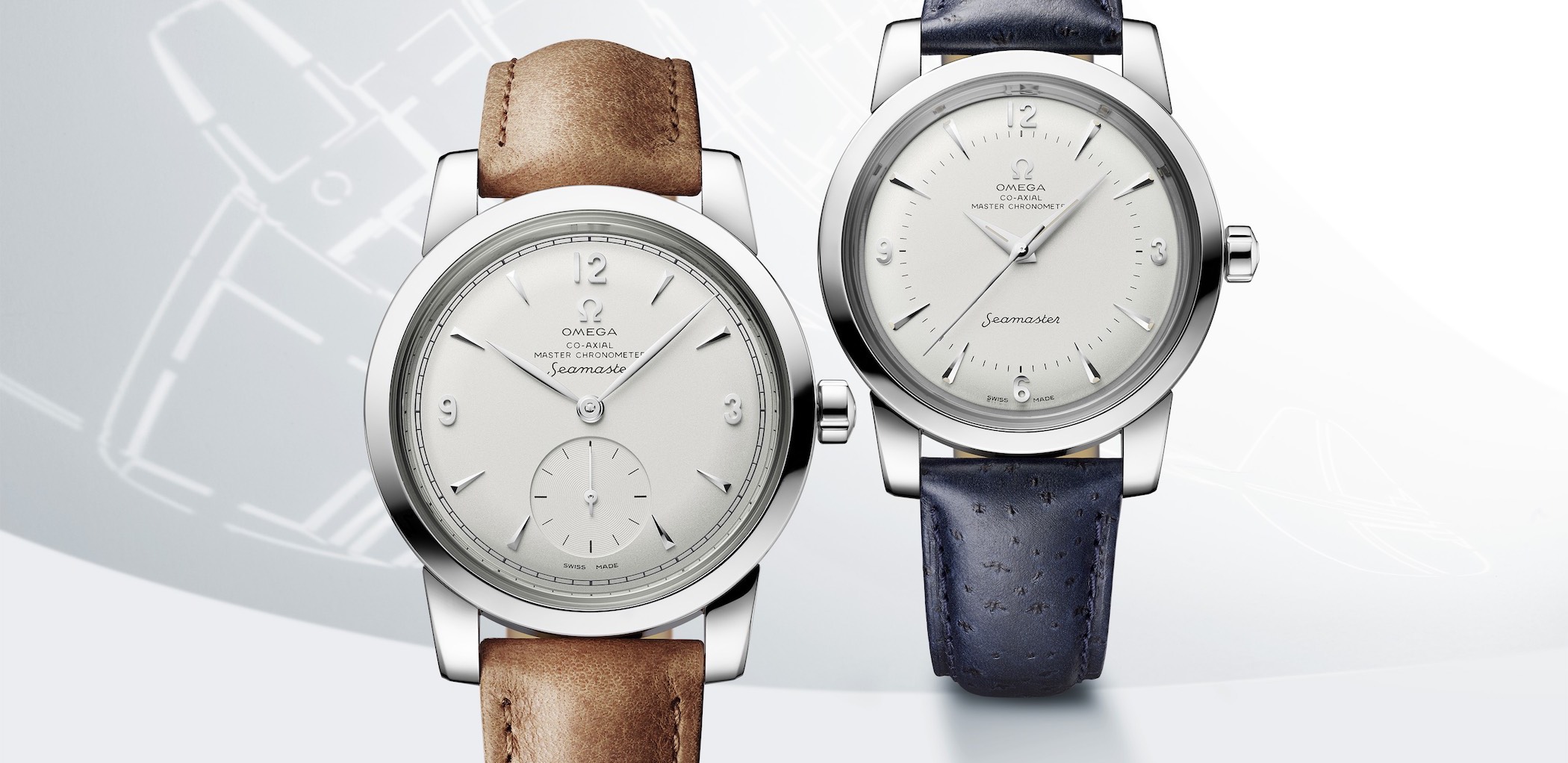
Omega Seamaster 1948 Complete Guide
The Seamaster is, together with the Speedmaster, the most iconic and important model by Omega. It has contributed tremendously to Omega’s success and has been reiterated hundreds, if not thousands of times.
The Seamaster was launched in 1948, and at its launch, it became Omega’s first family of watches. Because the Seamaster model has been such an important watch for Omega, the brand decided that, for the 70th Anniversary of the Speedmaster, they would pay tribute to it by releasing a Limited Edition timepiece. The result is something truly special and unusual.
In this article, we are going to focus on the Seamaster 1948, but before we do, let’s go back in order to get a better understanding of the background of the new model.
Omega Seamaster 1948 Limited Edition Background
As the name suggests, the 1948 Seamaster has something to do with that year. In fact, this is the year when the first Seamaster model was released. Omega supplied more than 110,000 watches to the British Ministry of Defence (MoD) between 1940 and 1945, and these watches were highly appreciated and valued for the great characteristics they had out in combat and their ability to withstand harsh conditions (water resistance and robust). As such, the demand for these robust and reliable timepieces increased, which lead to the creation of the Seamaster.
Today, the Seamaster has come to become the most iconic model by Omega, together with the Speedmaster. It has been worn by James Bond, but most importantly, the watch is up to par with what you expect from a modern dive watch.
But now, we are instead going back to the roots, rather than looking at helium escape valves and diver’s extension bracelets.
Instead, we are focusing on the first Seamaster version, and as you can imagine, this looks a whole lot different from the Seamasters of today.
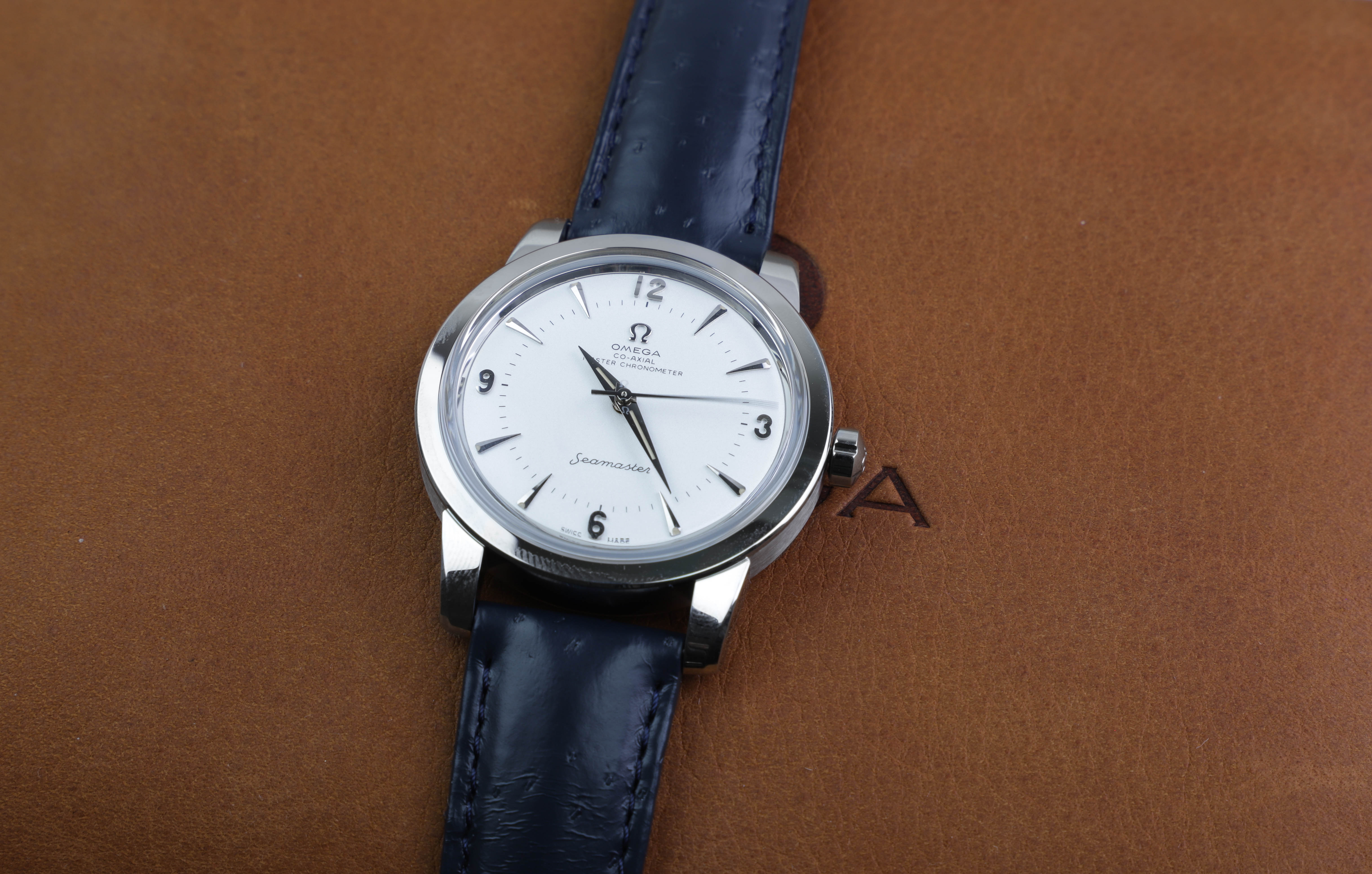
It’s probably a bit surprising to learn, but as a matter of fact, before the Seamaster was developed into a full-blown dive watch, the Seamaster was better known as a small dress watch cased in steel or gold. It was elegant, classy, and timeless. This is something that is proved by the fact that Omega decided to make a re-edition of the watch, 70 years after it was first released. The first Seamasters offered great water resistance and reliability for their era, but naturally, a lot has changed since then.
Omega Seamaster 1948 70th Anniversary
Let’s look closer at the Seamaster 1948 Re-Edition.
The Omega Seamaster 1948 70th anniversary is available in two different dial variations – one with a central seconds hand and one with small seconds subdial at 6 o’clock. The case is 38mm in diameter and made of polished stainless steel. The bezel is flat, and the lugs short. Just like the original. Essentially, the new 1948 Seamaster is meant to be a re-edition of the first Seamaster, so naturally, these watches look almost identical, even though they are 70 years apart. This perhaps goes to show just how timeless of a design it really is.
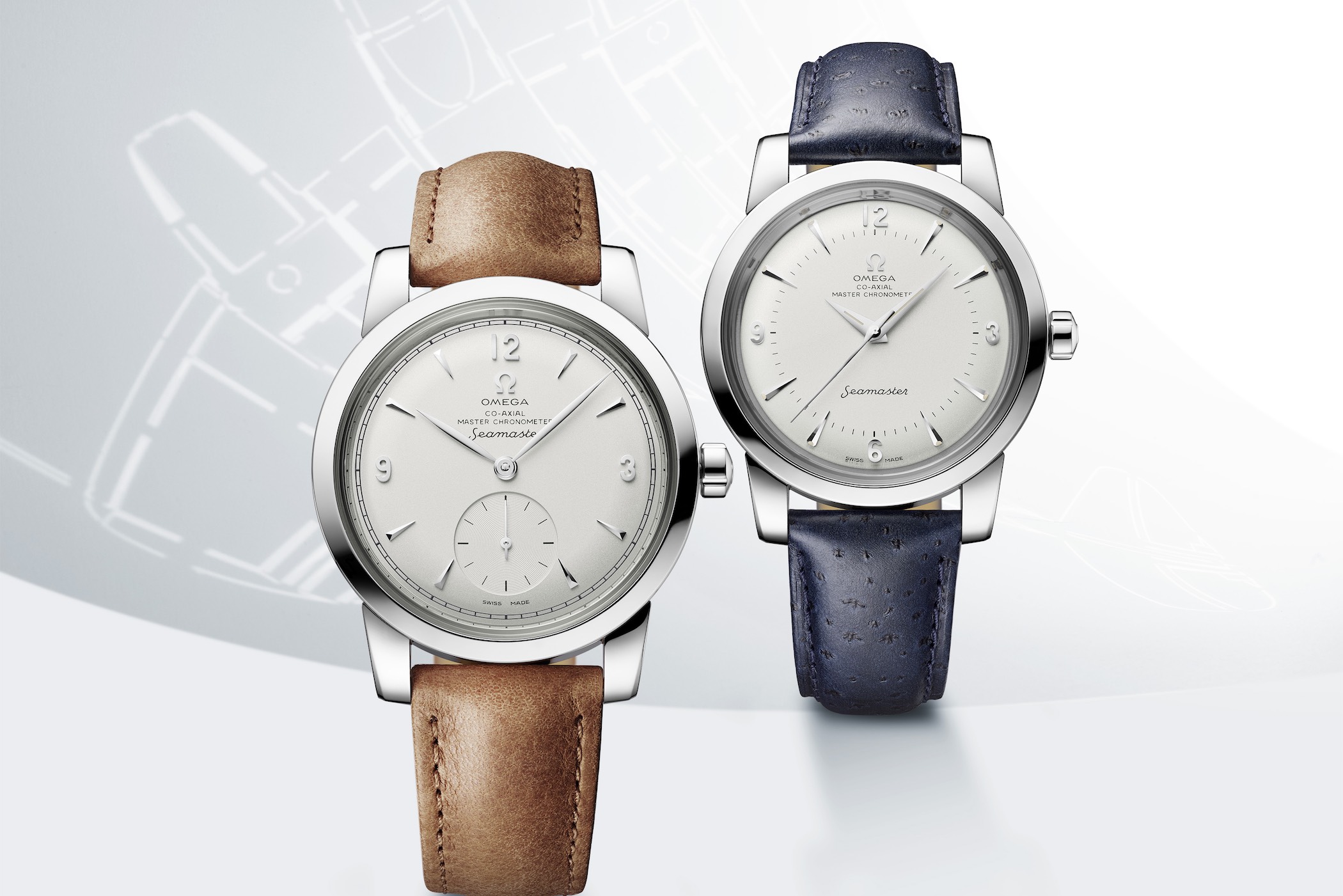
The two 1948 Seamaster versions are very similar, but also have a few differences. Both shares applied hours markers with Arabic numerals at the quarters and pyramids in-between, but on the central seconds model, there is a quiet chapter ring just inside the hour indices, with dauphine hands for the hour and minute indicators and a simple pointer hand to count the seconds. The sub-dial version is also accented with spots of faux-patina lume. The small seconds have an outer railroad track minute ring, with leaf hands.
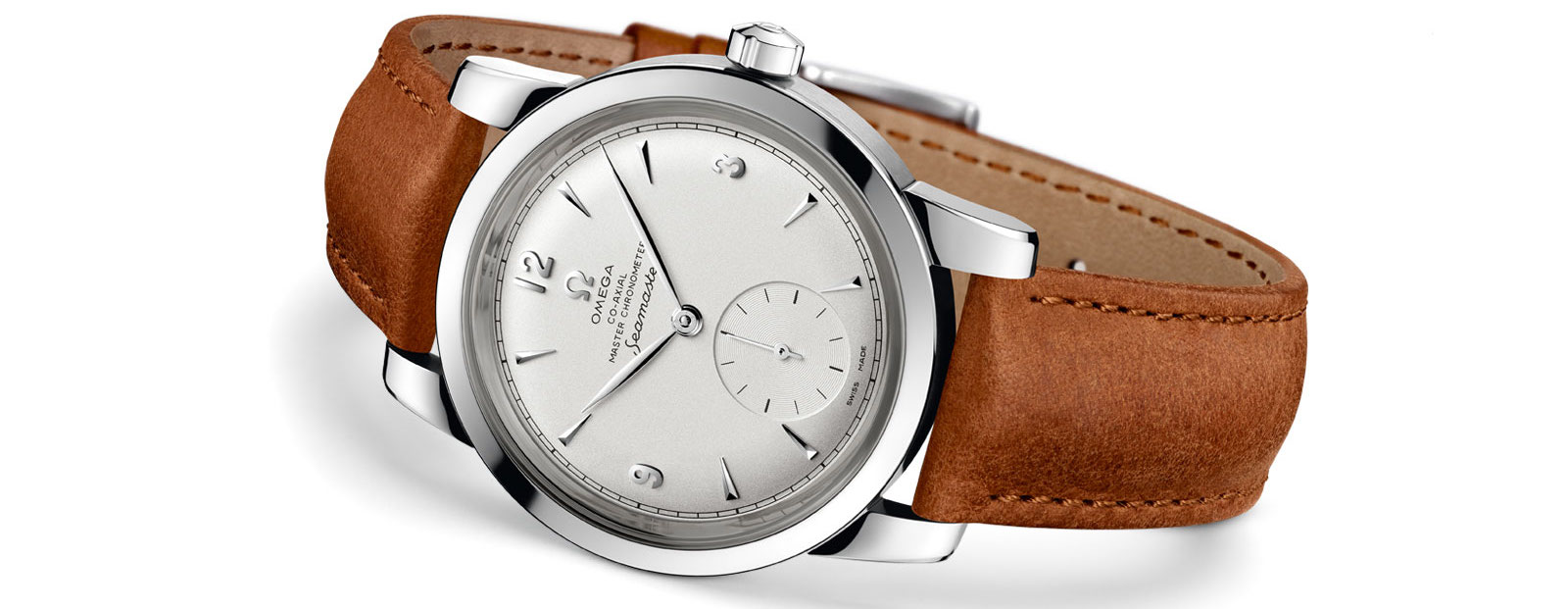
Naturally, since the two watches have different functions (sub-seconds vs central seconds hand), they use two different movements. The central seconds model is equipped with an Omega Caliber 8806, featuring a 55-hour power reserve, while the small seconds watch uses an Omega Caliber 8804, which offers a 60-hour reserve.
As you would expect, both movements are METAS Master Chronometer Certified and anti-magnetic up to 15,000 gauss. Omega proudly displays the calibers through a see-through case back of the watches. The glass on the case back is laser engraved and lacquered by hand with a 70th Anniversary logo, a Chris-Craft boat, and Gloster Meteor aircraft – the first jet plane used by the Royal Air Force. This is to pay tribute to the aviators and mariners who used Omega even before the Seamaster model was released, as discussed at the beginning of this article.
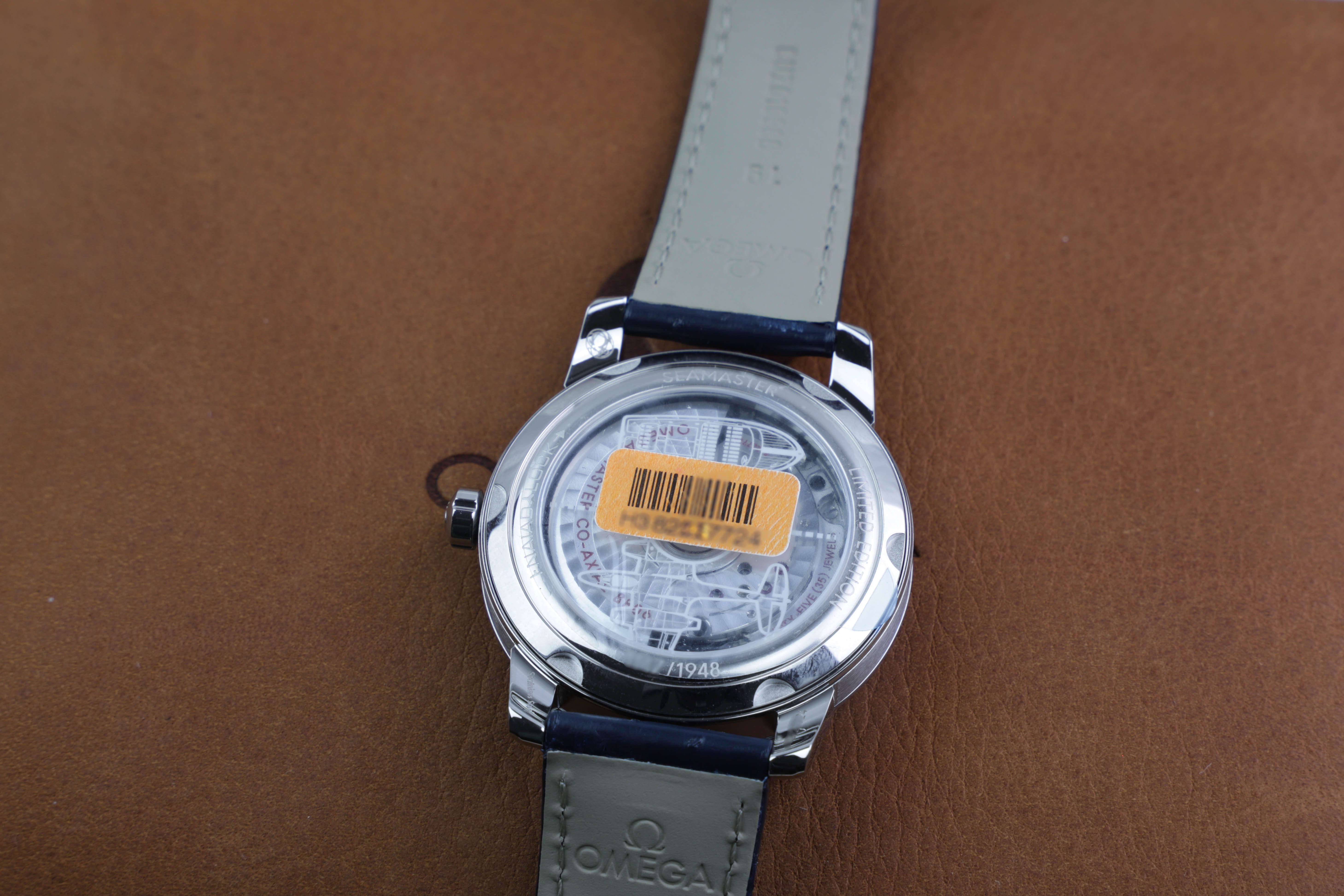
Whilst the original Seamasters of 1948 were “bumper” calibers instead of using bidirectional rotor systems, the modern calibers are much more reliable and durable.
The movements beat at 3.5Hz and are equipped with silicon balance springs and Omega’s famous co-axial escapement. The case back features a Naiad Lock that has a sapphire crystal window. The movement has a rhodium-plated rotor and bridges and Geneva wave decoration.
The Sub-seconds watch is presented on a brown leather strap with a polished-brushed stainless steel buckle with a vintage Omega logo. The central second version has a dauphine-style hour and minute hands filled with white Super-LumiNova. It comes fitted on a blue-grey leather strap completes the look. The hands used are very much vintage inspired and suit perfectly the designs of the watch.
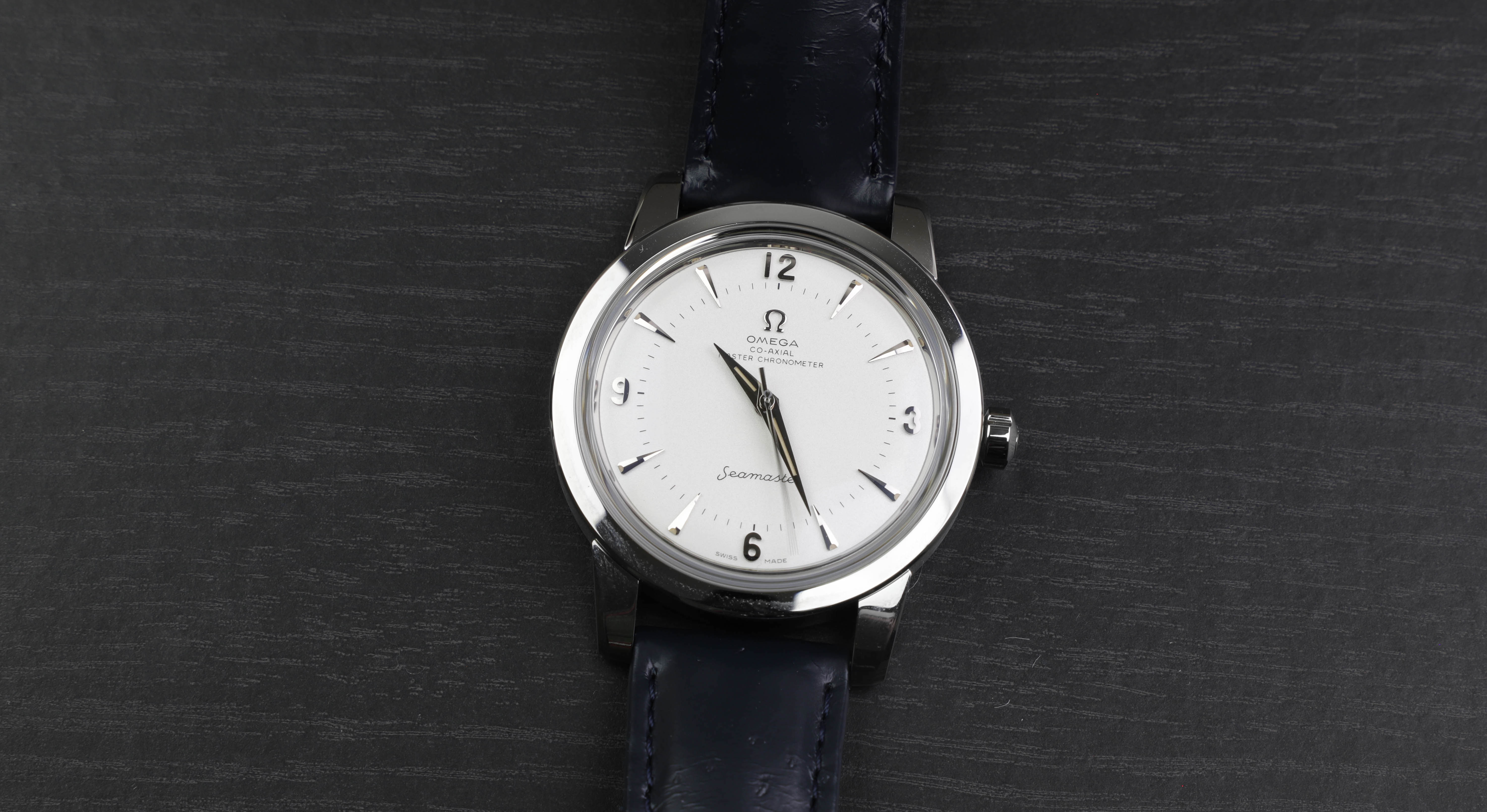
Design of the Omega Seamaster 1948
There is plenty to say about the Seamaster 1948.
As you would expect, the design is very traditional and classic, because after all, it is a re-edition.
But whilst the watches are designed in a vintage style, they have a lot of new and modern tech. This includes the new in-house calibers, Luminova, sapphire crystal, and more. All of which contribute to making the watch more reliable, durable, and robust.
The dials are matte and made in silver color. This silver (opaline) color gives a rich sheen. The dial is slightly curved, and so is the crystal, to give it that vintage feel and depth.
Both versions have applied markers that give the dial more ”layers” and greater depth.
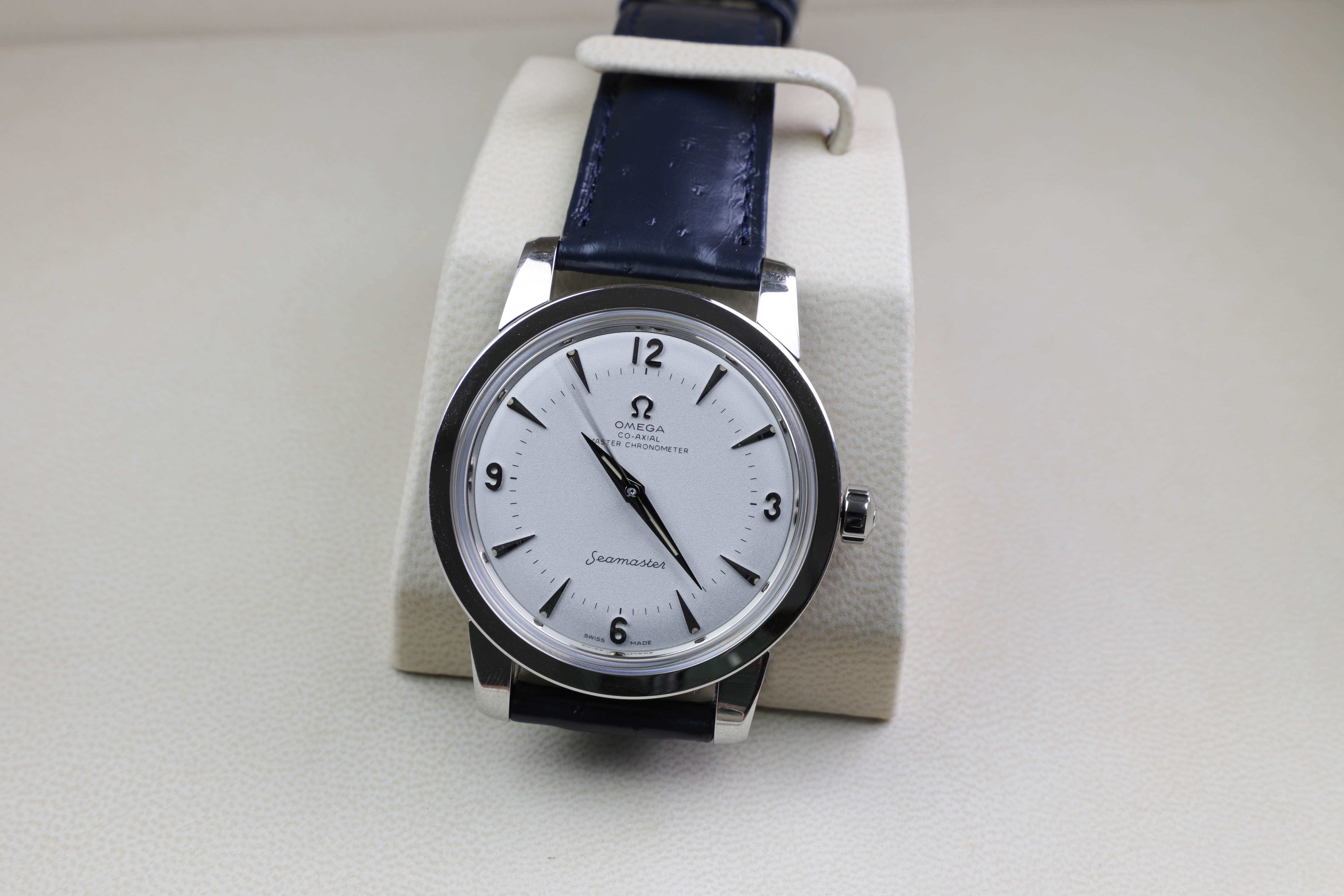
Looking at it from a historical perspective, the version with central seconds is the more common design, and the small seconds version is a much rarer version.
The watch uses Omega’s old logo, and equally so the old-style text printing on the dial (even though co-Axial” and ”Master chronometer” didn’t exist in 1948.
What is really interesting is that just like its ancestor, the watch is water resistant to 60 meters. 60 meters of water resistance from a Seamaster is not a very impressive number, but it has more to do with symbolism and staying true to the original than not being able to up the water resistance. Plus, it’s not really a watch people would think about going diving with, especially as they are equipped with leather straps.
Differences: Original vs new Omega Seamaster 1948
Apart from the mentioned technical features, there are some differences between the re-editions and the original.
The cases are 4 mm larger than the vintage models at 38 mm, and the applied markers are made in white gold rather than stainless steel.
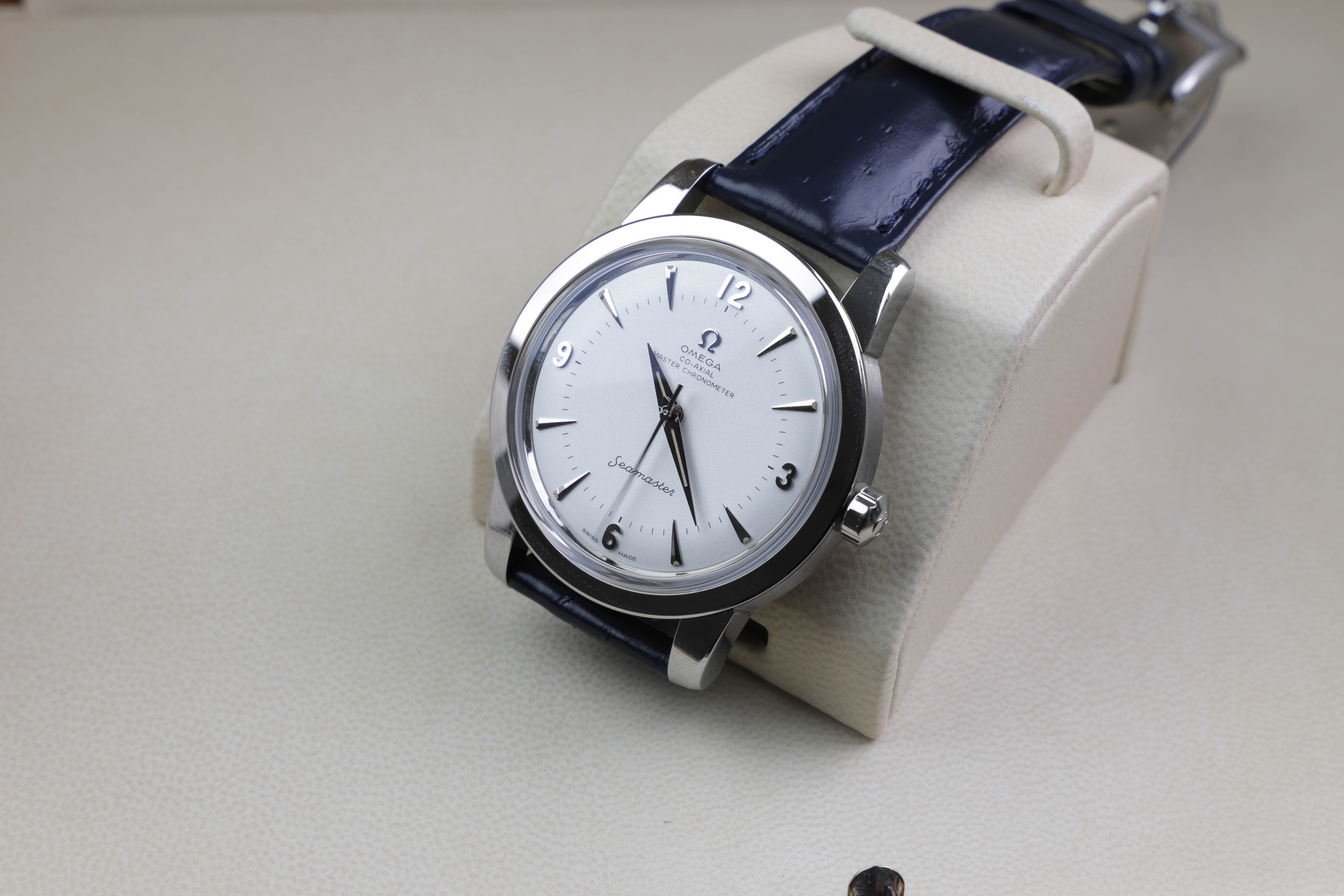
Neither of the watches shows the date, which of course makes for very symmetrical dials.
The calibers are automatic and not manual, which the original was. If you are a die-hard vintage fan, you would probably enjoy a manual movement for a re-edition. And frankly, that is what we would expect, but using an automatic movement is a more generally user-friendly choice that makes complete sense.
Omega Seamaster 1948 Re-Edition Specifications
- Brand: Omega
Model: Seamaster 1948 Center Seconds and Seamaster 1948 Small Seconds - Diameter: 38mm (both)
- Thickness: 11.2mm (center seconds), 11.65mm (small seconds)
- Case Material: Stainless Steel
- Dial: Opaline silver (with a domed profile and applied 18k gold Ω at 12 o’clock)
- Indexes: Applied Arabic numerals and daggers
- Lume: On hands and dagger-shaped hour markers (center seconds version only)
- Water Resistance: 60 meters
- Caseback: Flat sapphire, etched with 70th anniversary Seamaster logo, Chris-Craft boat, and Gloster Meteor plan, utilizing NAIAD Lock system
Caliber: Omega Caliber 8806 (center seconds)
- Functions: Hours, minutes, seconds
- Diameter: 29mm
- Power Reserve: 55 hours
- Winding: Automatic (winding in both direction)
- Frequency: 3.5 Hz (25,200 VPH)
- Jewels: 35
METAS Master Chronometer Certified
Resistant to magnetism up to 15,000 Gauss, silicon balance spring, Omega free-sprung balance, co-axial escapement, rhodium-plated bridges and rotor, and blackened screws, barrel, and balance wheel.
Caliber: Omega Caliber 8804 (small seconds)
- Functions: Hours, minutes, seconds
- Power Reserve: 60 hours
- Winding: Automatic (winding in both direction)
- Frequency: 3.5 Hz (25,200 VPH)
- Jewels: 35
- METAS Master Chronometer Certified
- Resistant to magnetism up to 15,000 Gauss, silicon balance spring, Omega free-sprung balance, co-axial escapement, rhodium-plated bridges and rotor, and blackened screws, barrel, and balance wheel.
Platinium versions
When talking about the Seamaster 1948, the watches that get all the attention are the two steel versions. But did you know that Omega has also made platinum versions of the Seamaster 1948?
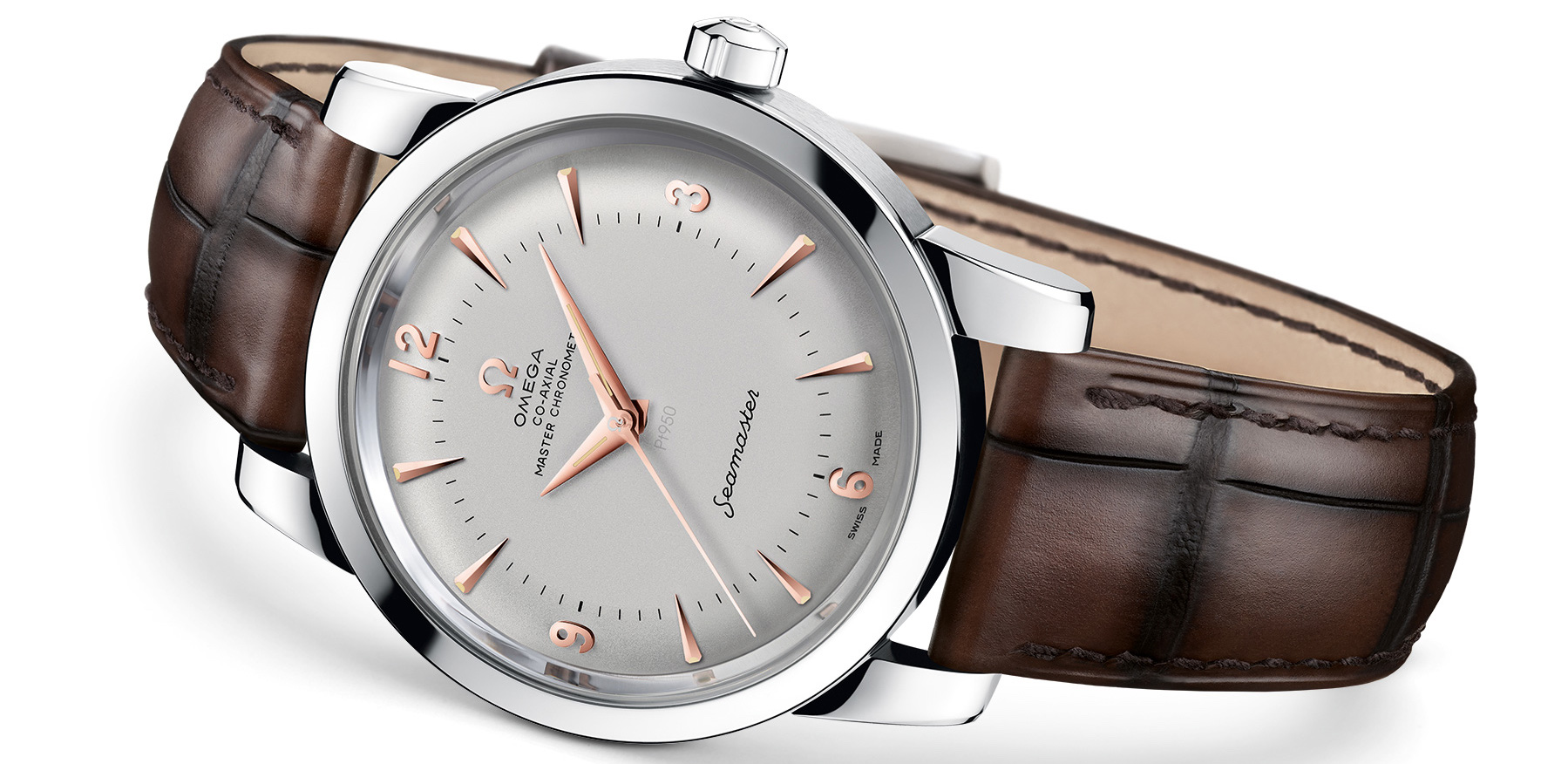
As a further tribute to the 1948 Seamasters, Omega has made two models cased in 950 platinum, each limited to just 70 pieces.
Following the same path of luxury, the movement inside features an 18K Sedna™ gold rotor and balance bridge.
The platinum duo still consists of one small seconds version with leaf hands and one centrum seconds version with dauphine hands.
Whilst similar to the steel versions, there are a few aesthetic details that differentiate them from their more common relatives.
First off, the platinum models have real platinum dials and gold hands. The platinum central seconds version has 18k Sedna gold hands – Omega’s proprietary rose gold alloy, while the small seconds version has yellow gold hands and comes on a hunter green strap.
The retail price is CHF 39,500 for the small seconds and CHF 39,000 for central seconds.
Conclusion
The leaf-hands and railroad minute ring style used is slightly rarer in the original era, which can be an explanation for the slightly higher retail price.
Also, the additional small seconds demand slightly more work, which may also motivate the higher price.
The watches are presented in their own special collector’s box made of soft brown leather and kept upright but easily moveable thanks to a magnetic floor. A spare NATO strap, leather strap, and strap-changing tool are also included. Each model is limited to 1,948 pieces
However, if I had to choose between the two watches, the Small Seconds model gets my vote. The harmonious silver-on-silver tonality of the dial, the plump vintage-style numerals at 12, 3, and 9 o’clock, the arrow-shaped hour markers that curve to meet the slope of the dial, the elongated leaf-style minute hand that reaches all the way to the minute track, and the pleasing rotundity of the case endow this model with a truly vintage spirit that still resonates today.




